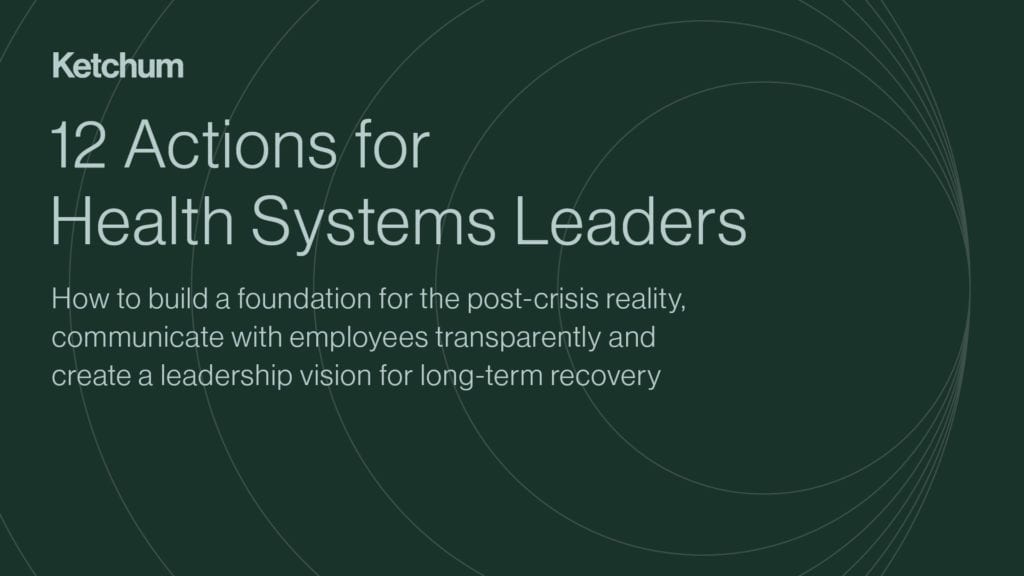A few days ago, President Trump signed into law a $2 trillion bill to address the impact of the coronavirus (COVID–19) – the largest emergency relief package in U.S. history. Approximately $100 billion of that total is allocated to health systems and hospitals on the front lines of the crisis.

With healthcare professionals among the hardest hit, the need for financial resources, increased capacity, protective gear and supplies is great. Hospital CEOs are responding in force with public reassurance and innovative strategies, but the financial outlook is dire. Treatment of patients afflicted with the virus means lower reimbursements. Elective procedures, which offer higher reimbursement rates, are delayed indefinitely. Hospital administrators – already managing razor–thin margins – predict a dramatic hit to the bottom line.
The aid package includes several provisions to reimburse providers for expenses or lost revenues related to coronavirus:
- A 20% bonus for costs associated with treating patients with COVID-19
- Funding for protective gear
- Cancellation of a planned 2% across-the-board cut in Medicare reimbursements, and a delay in cuts for hospitals that treat low-income and uninsured patients
- A no-interest-for-a-year loan equal to the previous six months of Medicare funding
- Hospitals in rural and other underserved areas are eligible for 125% of that amount in advance
The stimulus is an important first step, but analysts estimate at least $1.4 trillion may be necessary to keep hospitals solvent. COVID–19 has forever reframed the healthcare landscape.
Beyond finances, health systems leaders will need to adopt a range of tools and approaches to assure a position of strength:
Anticipate the New Reality
- Mobilize a senior team to anticipate long–term impact, prioritize response actions for the toughest challenges ahead, and determine what decisions are needed to stay solvent
- Leverage the healthcare professionals in your network to talk to media on how the relief plan will impact your hospital and what else is needed
- Consider bold steps – ask yourself if leaders should forgo salary and bonuses during the crisis
- Review daily lessons learned on multiple levels: consider how to maintain a necessary structure of care, fight for additional relief funds, continue to innovate and protect against new threats
- Engage with donors, foundation and community partners to reevaluate priorities and review options such as redirecting foundation dollars to support employees and the community
Reinforce Employee Transparency
- Clearly communicate efforts to adjust staffing and redeploy individuals throughout your organization
- If you must furlough non-essential employees, prepare to communicate the action and impact
- Consider how to minimize burnout and keep frontline caregivers active and engaged; publicly recognize the heroic work of frontline caregivers
- Inform employees exactly where relief funding will alleviate pain points and what more is needed
Establish a Leadership Vision
- Use the relief bill to showcase to local community or state leaders how the organization is meeting the challenges of COVID–19 and delivering excellent care to the community
- Develop a post-crisis plan to communicate safety and best practices to future patients and their families
- Determine the tone of the ongoing legislative discussion and determine how your organization can best be positioned as decisions are made about long–term recovery funding
Based on what we are seeing, and on my past experience counseling clients during the Ebola outbreak, the need for resources and financial support is only going to increase. The health systems and hospitals best able to navigate the broader impact of COVID-19 will be the ones that leverage executive leadership, compassionate communication to internal and external audiences and a forward-looking strategy that prompts the community to consider long–term actions to protect public health.
Ketchum is counseling major health systems around stakeholder engagement and workforce communications related to COVID-19. If you have an issue or business need you’d like to discuss, please get in touch.



